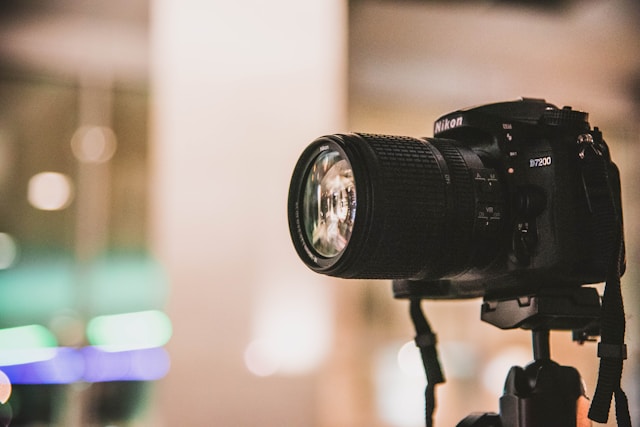You can put them in a bag without thinking, or roll them up in a bag and get through the day. Passive insulation is generally very good with headphones, unlike ears, because they are sealed to the ear. Silicone or memory foam headphones create a compelling seal that blocks out background noise, and when adjusted correctly, can be almost as effective as some noise-canceling options.
Memory foam headphones are the best because they fit the unique shape of your ear. The closed headphones come with an outer shell without holes or vents, which picks up the sound in the cups and also prevents external noises. This can sometimes make your music sound somewhat unnatural, especially compared to open headphones, but they certainly offer a more powerful bass output that may be due to the slight echoes in the bass noise canceling headphones tones. Still, they are the best option for traveling and listening to music in places like your office, airplanes, or anywhere else in public. These are also better for recording and mixing audio, as isolation is critical to these tasks. A closed design makes the listening experience more intimate, but it can make everything in the mix sound like it’s stacked on its own rather than scattered over the listener’s head.
These also adapt to the shape of your ear canal and provide greater isolation and better bass output. However, regular rubber tips can also be effective if you find the right fit. Some audio manufacturers, such as 1MORE, offer a wide range of headphones in different shapes and sizes. This allows users to find a hyper-personalized setting that helps with overall comfort and also helps you get a better listening experience. The new kid on the block, true wireless headphones is now an immensely popular segment in audio products.
That said, if you mainly listen to podcasts and don’t mind the best in sound quality, a budget pair of headphones can be a smart buy. Because open headphones allow air to flow freely through grills and drivers and into their ears, what you’re hearing sounds like it’s around you. Many lovers of open rear headphones use the term “out of the head” to describe the phenomenon. Think of it as a private concert, that sense of music that surrounds you, left, right, up and down. If you’re looking for some cans to use only at home, consider going to your local audio store to try out the open headphones. It should be clear how big the tip holes are so you know you’re not going to buy the wrong fit.
However, this design doesn’t make the headband foldable, forcing users to carry the bulkier-than-usual carrying case that comes with these headphones. Only opt for aesthetics if they don’t interfere with the comprehensive functions, comfort and sound quality of your headphones.
In fact, many headphones with smaller drivers actually sound better than over-ear headphones, which means that the size of the controller shouldn’t be your only consideration when choosing headphones. We’ve tried many different headphones over the years, and we’re here to help you make the right choice. So whether you’re looking for a pair of true modern wireless headphones or wired headphones to use with your turntable, we’re here to give you all the information so you can make the right decision for your needs.
This captures sound and can provide a form of sound isolation, meaning it prevents sound from leaking out and ambient noise from leaking in from the outside of the headphones. Even without active noise cancellation, many closed headphones offer enough sound isolation so that the user can’t hear someone talking standing right in front of them. We found the Beats Studio Buds to have fantastic value, but their sportier version is an even greater value. Active noise cancellation works similarly to airPods Pro and attenuates most ambient sounds for quiet listening sessions. The redesigned design with integrated headphones is highly appreciated for optimal fit. IPX4 water resistance ensures that the buds are also protected against moisture damage.
Sure, there’s your rare case of Samsung Galaxy Buds Plus or Beats Powerbeats Pro, but most headphones drop between 4 and 6 hours of battery life before you need to charge them. Accurate audio playback is more difficult for engineers to achieve when working with the physical size limitations of the ears. There are many audiophile headphones, but they cost much more than the standard listener is willing to pay. Again, for the credit of the in-ear headphones, the relationship between sound quality and price has improved a lot, but the headphones still have headphones for the realistic budgets of most listeners.
They are in-ear headphones that are stored in a case that also serves as a charger. They are extremely portable, ideal for an active lifestyle and are completely free of wires and tangles. In fact, most of these have an impressive battery life, the average is around 5-8 hours on the headphones themselves with 2-3 additional charging cases. However, they are exceptionally easy to lose due to their small form factor. If you’re a music producer who wants to use headphones instead of studio monitor speakers, you might want to consider frequency response. This is a measure of how accurately the headphone speakers can reproduce sound evenly over a range of frequencies (usually 20 Hz – 20 kHz).
Depending on what you want to use them for, you may also want to consider purchasing wireless and/or noise-canceling models. Depending on the wireless headphone variant you buy, battery life may or may not be a major concern. On-ear and over-ear headphones have a much longer independent battery life than wireless and true wireless headphones. Most wireless headphones offer at least 18 hours of playback time on a single charge, and most traditional wireless headphones offer at least 8 hours of playtime.



